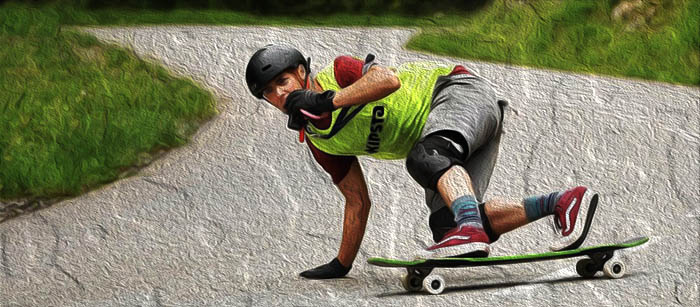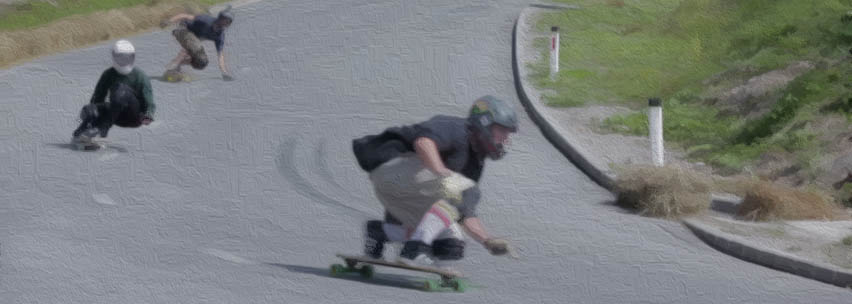When you think about it, skateboarding isn’t that important if your priority is to learn how to ride. A beginner needs some flat ground and time for practice (like when they have their driveway or parking lot).
But once you get into town riding around the course of streets with cars zooming past – well, then we’ve got our work cut out for us! The good news, though: steering will be one skill we can master early on before tackling anything else in-depth.
Focusing more deeply makes me realize there’s another reason why turning comes up so often.
How to Control a Skateboard
- Steering a skateboard isn’t much more than gently nudging it in one direction or another. But this simple action can be the difference between safety and disaster.
- Ride slowly with both hands on top of the deck to get used to the riding position; then, when ready, take small steps towards the turn’s exit point without pushing off foot too far away from the edge first.
- Once at the desired spot, release pressure slightly, so the nose touches the ground 0-10 cm depending.
- Practice this until you can quickly correct your board without teetering.

To turn a skateboard, you need to be in the proper stance with your upper body angled toward its front. And have weight balanced equally between both feet. Shift that load onto either ball or heel depending if it’s time for turning side-side (frontside) or backwoods heresy.
It’s essential not only to Ao this but must also to make sure there isn’t too much change from the centered position.
When changing direction because then things could get hazardous quickly, like drifting. So pay attention at all times while balancing on these babies; don’t forget how shaky I felt earlier, which may mean adjustments are needed?
Sharp Turns on a Skateboard
Making sharp turns on a skateboard is entirely different from gentle ones and considerably harder to perfect.
Leaning can only turn the board so much because there’s not enough space for someone. Who’s trying hard enough before their horns bite or wheels are hit by metal against the concrete ground (a miserable experience known as “wheel bite”).
To overcome these limitations, you need some extra help – namely, bringing your ride up just slightly off of its surface with tricks like ollies and kickflips where air resistance helps out.

To turn, first, move your back foot along the deck to where it’s resting against an edge. Next, put pressure on this kicktail and bring both front wheels off of the ground just slightly. So they are sitting at about 90 degrees angle with respect towards you or whatever direction. That suits their natural lean best (for example, butting up against walls).
Throw in some force from here if needed until one side starts going through its whole arc while still maintaining contact. Then continue the momentum transition by turning the fixed point around instead. Practice sharp turns from a non-moving position to start.
Tips for Turning a Skateboard
Learning how to turn a skateboard takes practice. There is no way around it, and the only way you’ll learn balance or feel for movement fast enough in your first few tries at getting down with this thing on wheels- well, actually, there are two easy ways:
The faster route will be if someone else teaches them; then all they have to do before trying again next time their instructor isn’t around (or too busy)is watch one of those videos.
You should be able to perform all these actions well before worrying about steering.
Learn small turns first, then big ones; keep your trucks tight and adjust them as needed with time. Most importantly: don’t lean too far back. When turning or risk tensing up other muscles in an attempt to balance. Instead, learn how to properly rest yourself by lowering yourself down lower if necessary (or riding more upright).
You’ll also want to make sure you are comfortable enough on both feet. So that if one feels unsteady while attempting a turn, it won’t throw off everything else going on around them. Doing advanced tricks[1] gets you excited but not quite developed yet–like ollies over gaps without popping.
How to turn on a Longboard
As with shorter boards, they are turning on a longboard isn’t much different from riding in circles. Turn the board and make a 180-degree turn while staying at top speed. You must shift your weight onto one foot.
Then lean into it as hard as possible for about half of each revolution. Before putting pressure back down through all four wheels again. Moving feet or adjusting seat height depending on which works better for whatever surface we are trying to navigate over (level ground versus hills).
This type of steering will often help riders maintain some forward momentum. Because they can keep speeding up without having their balance threatened too significantly by steep slopes. However, there might not always be enough traction available when going uphill due to slower rolling surfaces, so sometimes slowing.
How To Turn On A Skateboard – Video Guide
